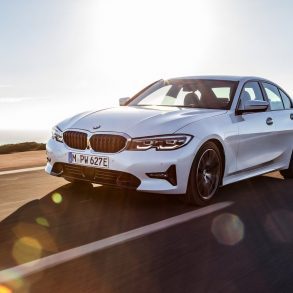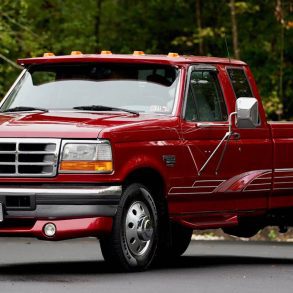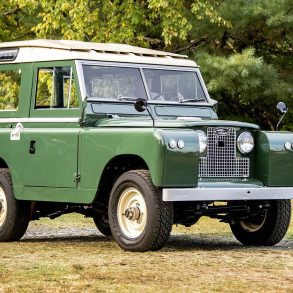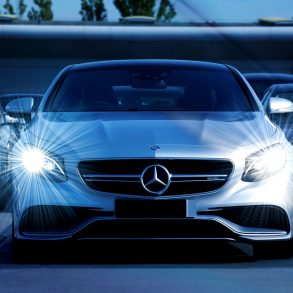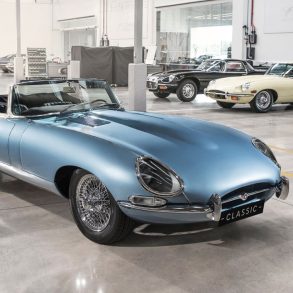To kick-start our coverage of the US car market we figured it would be good to give our European readers a bit of background on what the car market is like across the Atlantic. Here are 6 trends that differentiate the two markets:
1. The stereotypes are true: SUVs and pickup trucks are much more important in the US
While mainstream cars make up 60% of car sales in Europe, they only make up less than 40% of the US market. This becomes even more stark once you add the premium derivatives – the proportions become 75% vs 45%. Instead, the SUVs chunk of the market is almost twice as large in the US (30%) as it is in Europe (17%). Add to that another 14% of the US market that’s captured by pickups, and the high-level difference between the two markets becomes clear.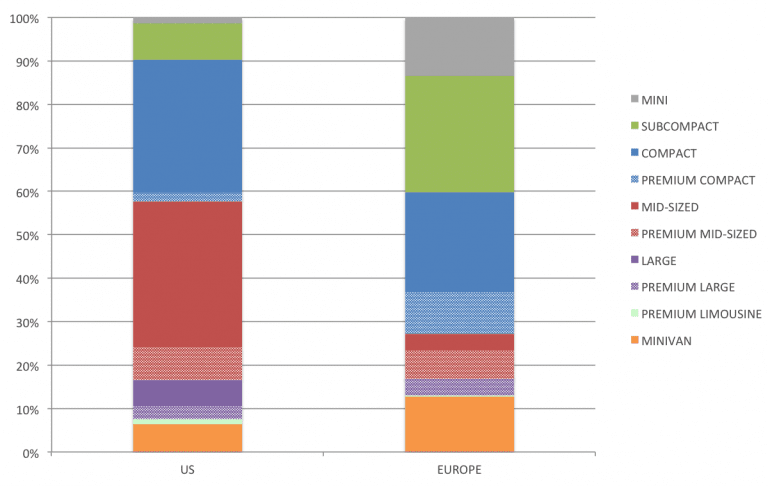
2. US is less brand-conscious than Europe
American buyers are much less brand-conscious than their European peers. This manifests itself in two ways. First, premium derivatives captures almost twice as large a proportion of the market in Europe (21%) as they do in the US (12%). Second, the US market is much more open to cars by “outside” manufacturers. That is the main reason why Japanese and Korean manufacturers were able to capture a much larger portion of the US market; it is also the reason why Lexus is a top-selling premium brand in the US, whereas it’s struggled to gain a foothold in Europe.
3. Bigger is better in the US mainstream and premium markets
Another stereotype is true: big still sells in the US. Although recent years have seen an assault by the likes of MINI and Fiat 500, as well as a renewed push by Ford Fiesta, Honda Fit/Jazz and Toyota Yaris, the mini and subcompact segments only account for 10% of mainstream/premium cars, compared to 40% in Europe. The compact segment is actually bigger in the US than in Europe, though the gap narrows once you include the premium models. But the bread n’ butter car in the US remains the mid-sized (sedan), as well as their large offshoots -over the past few decades in Europe the former market has declined heavily, while non-premium large cars have all but disappeared. Finally, it’s interesting to note that the minivan, despite being arguably invented in the US, captures twice as large a proportion of the market in Europe than it does in the US.
4. Sedans rule the mainstream market
If you ever ask a “car guy/gal” in the US what bothers them the most the answer you’re most likely to get is that Americans don’t buy hatchbacks or wagons. While exact data are hard to come by, the fact is that anything with a 5th door at the back sells much worse in the US than in Europe. The most-popular mainstream cars are all sedans – Toyota Corolla, Honda Accord, even the ghastly Ford Fiesta 4-door. Many manufacturers don’t bother offering hatchback/wagon versions of cars, even if they do so in other markets (the aforementioned Corolla/Auris, Honda Civic etc.), while those that do see the sedan model dominate (the VW Jetta outsells the Golf 3 to 1). Lately the hatchback is gaining ground with the popularity of the MINI/500 and the growing subcompact segment, but it is starting from a very low base. And those that want a wagon simply choose an SUV instead.
5. Americans don’t value variety when it comes to cars
This is possibly the least appreciated difference between the two markets, but the car buying experience is very different in the US and Europe. Whereas European buyers value variety of choice (the Golf/Jetta/Touran between them offer 7 bodystyles with 8 petrol /5 diesel engine variants), American buyers prefer to choose from between fewer options (the Golf/Jetta offer 3 bodystyles and 3 petrol /1 diesel variants). Again, it’s hard to get hands on exact data, but anecdotal evidence suggest that the “base engine” accounts for some 80-90% in most mainstream cars.
6. Hybrid won the war over diesel in the US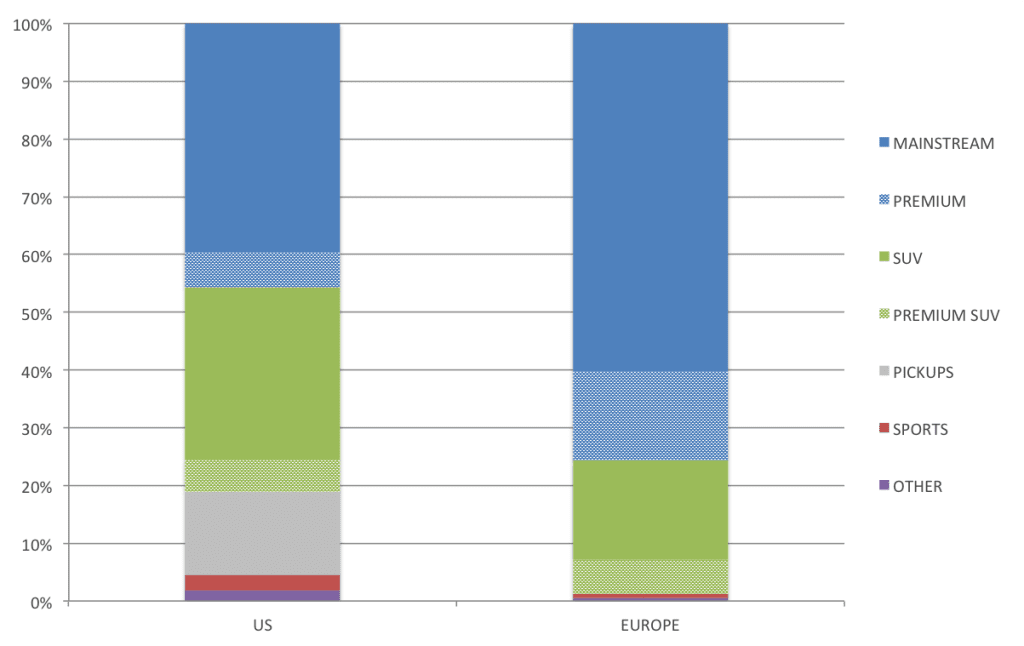
For a variety of reasons, the diesel engine that remains more popular in mainstream European cars than the petrol option, never caught on in the US in the same way. Part of the reason is that diesel is not subsidized in the US the way it has historically been in Europe, another is that until recently gas was much, much cheaper in the US, undermining the case for the efficient but slow and uncouth diesel. Instead, americans have fallen for the hybrid powertrain. Not only do dedicated hybrids account for 2% of the US market compared to 0.5% in Europe, but most big-selling cars in the mid-sized and larger segments offer a hybrid option. Diesel has seen an increase in popularity in recent years, mainly due to the push by German manufacturers like the VAG group, BMW and Mercedes, but it’s growing from a tiny base.


